 2021-04-15
2021-04-15
The joint venture co-funded by Epistar of LED leader Ennostar and LED display supplier Leyard is currently experiencing a short supply of production capacity owing to the vigorous demand for Micro LED, and has scheduled its orders to June. The joint venture will be initiating the production expansion 7 months earlier, and is expected to arrive at a monthly capacity of 800 million (800kk) units prior to the end of May, which will also benefit Ennostar.
Epistar and Leyard announced on the joint venture in March last year, where the two had joined hands on the arrangemen...
Continue reading →
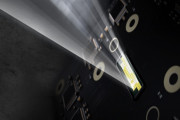 2021-04-15
2021-04-15
Monolithically-integrated PixCell LED design provides precise selective lighting control to improve driving visibility and help drivers better respond to surrounding environments Source:Samsung Samsung Electronics, a world leader in advanced digital component solutions, today announced PixCell LED, a new automotive LED module optimized for intelligent headlights, such as adaptive driving beam (ADB) systems. ADB headlamps powered by Samsung’s PixCell LEDs will help improve driver visibility and safety to enhance the overall driving experience at night...
Continue reading →
2021-04-15
Vector Photonics has received £1.6m of equity investment to commercialise its unique, PCSEL-based, semiconductor laser technology. The company’s PCSELs (Photonic Crystal Surface Emitting Lasers) revolutionise semiconductor laser manufacture and performance, with real benefits over existing laser technology in data communications; additive manufacturing, including metal and plastic printing; LiDAR; and optical sensing – some of the fastest growing technology markets in the world right now.
Neil Martin, CEO of Vector Photonics, said, “We...
Continue reading →
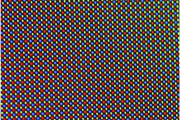 2021-04-15
2021-04-15
The findings pave the way for development of more efficient, next-gen LEDs covering the entire visible spectrum
● New multifaceted method can directly observe compositional fluctuations in indium gallium nitride, a semiconductor material used in LEDs
● Research found that compositional fluctuations are potentially linked to the origin of drop in efficiency of higher indium content LEDs
● The method can be adapted and applied in other materials science studies to investigate compositional fluctuations
Researchers from the Low Energy Electronic Systems (LEES...
Continue reading →
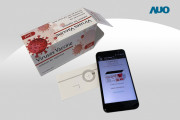 2021-04-15
2021-04-15
AUO leads to debut TFT optical fingerprint sensor with world’s highest pixel density, and the largest ultra-thin LTPS TFT fingerprint sensor module(*)
The technology of 5G and AIoT drives the development of various innovative field applications as well as more diverse and smarter human-machine interface. As a leading optoelectronic solutions provider, by leveraging the profound technologies developed over the years, AUO will present a series of cutting-edge sensing technologies deriving from TFT technology in Touch Taiwan this time. For fingerprint scannin...
Continue reading →
 2021-04-14
2021-04-14
Montreal, QC, March 11, 2021 - Luminis® (www.luminis.com), an established innovator and manufacturer of specification-grade, interior, and exterior lighting solutions, will now offer a range of its luminaires with RGBW color LEDs. Full color tuning is available for luminaires in the Lumistik and Lumiquad families. With over 16 million possible hues, architects and landscape architects can utilize colored illumination to make a design statement, enhance building facades, or highlight specific landscaping features. Also, the illumination can revert to white as requir...
Continue reading →
2021-04-14
by Randy Reid April 6, 2021 updated at 3:15 EST, 6 APR 2021 Companies Ally to Offer the Most Complete and Innovative Lighting Solutions Platform Deco Lighting (Deco) and Premium Quality Lighting (PQL) today announce the operational integration of product design, sourcing, and fulfillment activities that immediately creates the industry’s most cost-competitive and comprehensive lighting solutions platform. PQL is a trusted and proven supplier of LED commercial and industrial lighting, featuring a wide range of products, less than one day turnar...
Continue reading →
 2021-04-14
2021-04-14
LeddarTech®, a global leader in Level 1-5 ADAS and AD sensing technology, is pleased to announce the appointment of Dr Olaf Berlien to its Board of Directors, further enhancing the diversity and industry expertise of the Board. Dr Berlien possesses over 30 years of experience in senior executive positions specializing in engineering, automotive, and lighting. Notably, until recently, Dr Berlien served as CEO of OSRAM since January 2015. Before joining OSRAM, Dr Berlien served as CEO of M+W Group, a German company for systems engineering...
Continue reading →
 2021-04-14
2021-04-14
Apple is expected to announce new products at the Spring Loaded event on 20 April 2021. Here's what to expect, from iPads to Apple TV. Apple has announced details of its first event of 2021. The company will host the "Spring Loaded" event on 20 April at 6pm BST, 10am PDT. We will discuss everything you need to know about the Apple spring event below, including when it will start in your region, what Apple will launch, and how you can watch it. When is the Apple spring event? Apple's virtual personal assistant, Siri, spoiled the surpris...
Continue reading →
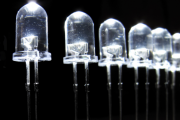 2021-04-13
2021-04-13
ESPOO, Finland, April 13, 2021 /PRNewswire/ -- Picosun Group has proved to significantly increase the production efficiency of its LED and OLED customers with the PICOSUN® P-300BV ALD system. Recent tests show that a reduced ALD process cycle time and an increased number of wafers deposited with the same film thickness resulted in almost 100% better throughput. A throughput of over 20 000 wafers per month can be reached with a wafer batch of 100 wafers*. At the same time, the process quality in terms of film thickness uniformity has remained on an...
Continue reading →
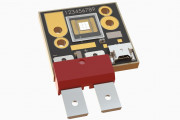 2021-04-13
2021-04-13
CBM-90-IRD LEDs are a practical alternative to lasers in industrial and life science applications Luminus Devices has expanded its portfolio of ultra-high-power infrared (IR) LEDs with a new product line that addresses the rapid expansion of life sciences, medical, machine vision, and industrial applications. The Luminus CBM-90-IRD LEDs come in three peak wavelengths - 780nm, 850nm, and 940nm - and are said to deliver unmatched radiometric power in a compact package platform that is well-suited for fibre-coupled applications. These newly-introduced IR ...
Continue reading →
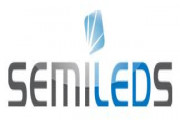 2021-04-13
2021-04-13
For fiscal second-quarter 2021 (ended 28 February), LED chip and component maker SemiLEDs Corp of Hsinchu, Taiwan has reported revenue of $1.2m, rebounding from $719,000 last quarter, despite shutting down manufacturing production for two weeks (6-21 February) due to the Chinese New Year holiday. However, this is still down on $1.537m a year ago.
Gross margin was 20%, recovering from -3% last quarter but below the 36% a year ago. Operating expenses have fallen further, from $1.077m a year ago and $950,000 last quarter to $748,000. Operating margin was -42%, an impro...
Continue reading →
 2021-04-12
2021-04-12
Provide light distribution specifically designed to enhance fish growth of many different fish species, including tilapia
Fit any pond size and can Illuminate up to six hours after sunset
Eindhoven, the Netherlands – Signify (Euronext: LIGHT), the world leader in lighting, has launched new Philips solar fish grow lights that help to optimize farming for ponds, while harnessing the power of the sun. It provides spectral light specifically designed to suit many fish species, including tilapia. The grow lights enable fish farmers to increase fish producti...
Continue reading →
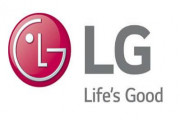 2021-04-09
2021-04-09
LG Electronics officially announced on April 5th its exit from the smartphone business after years of drastic losses in the ferocious smartphone market.
In a particular statement, LG stated that it will continue selling its existing inventory, and the current equipment will receive constant after-sales support and software updates. LG expects to terminate its smartphone business prior to the end of July, though the company will continue on the R&D of relevant communication technology such as 6G so as to further enhance its competitiveness in other fields.
As pointed o...
Continue reading →
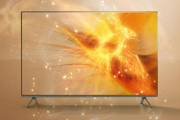 2021-04-09
2021-04-09
Emerging brand FFALCON of TCL recently hosted a product launch named “TALK Until Levitation”, and announced the FFALCON R645C Mini LED TV series, among which the 55”, 65”, and 75” R645Cs are priced at RMB 4,999, RMB 6,499 and RMB 8,999 respectively.
FFALCON R645C TV Specifications:
Exterior Design: metal bezel, measures at 24.8mm in thickness.
Bezel Width: upper bezel 2.5mm, bottom bezel 22.6mm, left and right bezels 2.5mm
Display Specifications: ultra-high 4K resolution, supports HDR and...
Continue reading →
 2021-04-08
2021-04-08
Recently, Aixtron announced that it has been supplying the AIX G5+ C MOCVD system for Micro LED manufacturing to a tier-one US LED supplier, though Aixtron did not disclose the identity of the US company and further details of the transaction.
One of the key parts of Micro LED manufacturing is mass transfer. Achieving Micro LED mass transfer requires significantly more stringent wavelength uniformity and defect density parameters during the epitaxy process, compared to conventional LEDs. For Micro LED mass production to be viable, manufacturers ...
Continue reading →
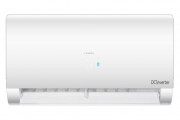 2021-04-08
2021-04-08
Haier’s new UV Clean Pro air conditioner eliminates virus through its built-in LED UV light that sterilizes the surrounding by providing clean and breathable air The AC aims to redefine innovation with contactless connectivity, AI-enabled voice control, and a unique convertible feature that optimizes energy saving New Delhi, 31 March, 2021: Haier, the global leader in Home Appliances & Consumer Electronics and World's Number 1 brand in Major Appliances for 12 Consecutive Years*, augmented its AC line-up for the summer season wit...
Continue reading →
 2021-04-07
2021-04-07
According to NHK, Japanese scientist Isamu Akasaki died at age 92 on April 1st, in one of the hospitals in Nagoya, Japan due to pneumonia.
Photo credit: Meijo University
Isamu Akasaki was born in 1929 at Kagoshima Prefecture. He graduated from Kyoto University's science department and received a Bachelor of Science degree in 1952.
Later on, he worked in Kobe Industries Corp., Nagoya University, and Matsushita Research Institute Tokyo, Inc. (MRIT), respectively.
In 1981, he became a professor of Nagoya University. In 1992, he began to wor...
Continue reading →
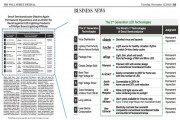 2021-04-07
2021-04-07
Continued to record over KRW 300 billion for three consecutive
Recorded the highest first quarter consolidated revenue at KRW 312 billion
Expected to grow by another double-digit in the second quarter
Secured a foundation for sustainable growth with leading 2nd generation patented LED technologies
Company will report details of the first quarter earnings and a sales guidance for the second quarter at the end of April
ANSAN, South Korea (April 7, 2021) – Seoul Semiconductor Co., Ltd. (“Seoul”) (KOSDAQ 046890), ...
Continue reading →
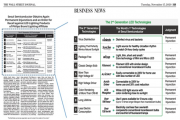 2021-04-06
2021-04-06
Achieved the historical highest first quarter sales at KRW 120 billion amid low seasonality New sales recognized from the 2nd generation leading technology products such as Micro LED and VCSEL Expected to grow up to double digits in sales this year as sound growth trend continues ANSAN, South Korea (April 6, 2021) – Seoul Viosys Co., Ltd. (KOSDAQ 092190), a leading global compound semiconductor provider, today announced that despite low seasonality, it achieved the highest first quarter sales of all time (preliminary sales announc...
Continue reading →
 2021-04-06
2021-04-06
CLEVELAND, April 5, 2021—GE Current, a Daintree company (Current), today announced the acquisition of Forum Inc. (Forum), a privately held, Pittsburgh-based architectural linear luminaire company with a 50-plus-year record of high-quality exceptional products and proven manufacturing capabilities. Forum has manufactured lighting for numerous landmark projects, including the World Trade Center Transportation Hub in New York City, Cleveland Clinic and the Roberto Clemente Bridge in Pittsburgh. This transaction expands Current’s architectura...
Continue reading →
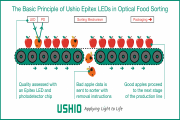 2021-03-31
2021-03-31
The agricultural and food processing industries have long pioneered the automation arena as they scramble to provide sustenance to an ever-growing population. It is a sector on which almost all of us rely in order to survive and, in some cases, try to lead a healthy lifestyle. Aside from constantly evolving tools for the harvesting of raw food, mechanical sorting has been around longer than you might think, with the first food sorting machines appearing in the mid-1920s and early 1930s. During the early days, fluorescent lamps provided powerful visible light illumination, while haloge...
Continue reading →
2021-03-31
<iframe allow="accelerometer; autoplay; clipboard-write; encrypted-media; gyroscope; picture-in-picture" allowfullscreen="" frameborder="0" height="315" src="https://www.youtube.com/embed/fPykIeS_d6Y" title="YouTube video player" width="560"></iframe>Orlando, FL (US), 30th March 2021 – Absen Inc. is pleased to announce the launch of a new LED solution to the North America market, the MR series, an LED solution for the rental & staging and virtual studio market. Available in the 4.8mm, the MR series is a high impact floor display for interac...
Continue reading →
 2021-03-30
2021-03-30
Micro LED technology is on the verge of revolutionizing the display industry / AIXTRON tool of record qualified for the tightened Micro LED market requirements / AIX G5+ C impressive track record extended
Herzogenrath/Germany, March 30, 2021 - Greater colors, brighter images, higher energy-efficiencies. These are the properties of the ultimate display technology for tomorrow's mobile devices and televisions. Micro LED technology enables these features and is on the verge of revolutionizing the display industry. The Micro LED technology is on the ro...
Continue reading →
2021-03-29
<!--[if gte mso 9]>
<![endif]--><!--[if gte mso 9]>
Normal
0
0
2
false
false
false
EN-US
ZH-TW
X-NONE
<![endif]--><!--[if gte mso 9]>
...-->
Continue reading →
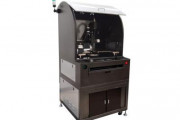 2021-03-23
2021-03-23
Taiwan-based STAr Technologies launched a new inspection system for MicroLEDs and mini-LEDs devices. the Unicorn-LAIT is an integrated system with parallel test instrument, probe station and probe cards and can meet mass production needs.
STAr says that its new system enables alignment of up to 6-inch wafers and probe cards for automatic probing test. The parallel test instrument will be based on STAr Taurus-LPX with PMU capable of performing 48 to a maximum of 240 LEDs in parallel. Attributed to the efficient system structure, The STAr Unicorn-L...
Continue reading →
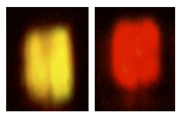 2021-03-19
2021-03-19
Porosification of InGaN provides a foundation for brighter red microLEDs Researchers at the University of California, Santa Barbara (UCSB), claim to have provided the first demonstration of InGaN-based red microLEDs with dimensions below 10 μm. Their work includes a measurement of the on-wafer external quantum efficiency (EQE) - a value of 0.2 percent. The team's miniaturised microLED will help the development of displays based on these devices and green and blue cousins. Screens formed from a vast number of tiny LEDs promise to deliver greater...
Continue reading →
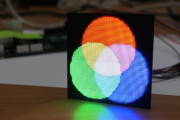 2021-03-19
2021-03-19
<!--[if !mso]>
v:* {behavior:url(#default#VML);}
o:* {behavior:url(#default#VML);}
w:* {behavior:url(#default#VML);}
.shape {behavior:url(#default#VML);}
Continue reading →
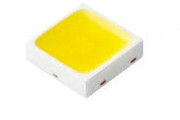 2021-03-16
2021-03-16
H6 LED series raises the bar in lighting quality and overall effectiveness in discerning environments
Tokushima, Japan – 15 March 2021: NICHIA, the world’s largest LED manufacturer and inventor of the high-brightness blue and white LEDs, announces its H6 series. Implemented into NICHIA’s 3030 mid-power 757 package to start, the new family of LEDs delivers the highest multi-level boost in color rendition and efficacy whilst maintaining the outstanding lifetime expected from NICHIA. Indeed, the H6 series delivers a color rendering ind...
Continue reading →
2021-03-15
Hamamatsu Photonics has developed a system for high-speed inspection of micro-LEDs on wafers to detect abnormalities in their external appearance, intensity and wavelength of their light emissions. This inspection system utilizes a photoluminescence (PL) measurement technique* that is based on our advanced image processing technology and a newly developed imaging module with our unique optical design technology. We call this micro-LED PL inspection system the ‘MiNYTM PL’, type number C15740-01. The MiNYTM PL makes fast pass/fail decisions when ins...
Continue reading →
 2021-04-15
2021-04-15
 2021-04-15
2021-04-15
 2021-04-15
2021-04-15
 2021-04-15
2021-04-15
 2021-04-14
2021-04-14
 2021-04-14
2021-04-14
 2021-04-14
2021-04-14
 2021-04-13
2021-04-13
 2021-04-13
2021-04-13
 2021-04-12
2021-04-12
 2021-04-09
2021-04-09
 2021-04-08
2021-04-08
 2021-04-07
2021-04-07
 2021-04-07
2021-04-07
 2021-04-06
2021-04-06
 2021-04-06
2021-04-06
 2021-03-30
2021-03-30
 2021-03-23
2021-03-23
 2021-03-19
2021-03-19
 2021-03-19
2021-03-19